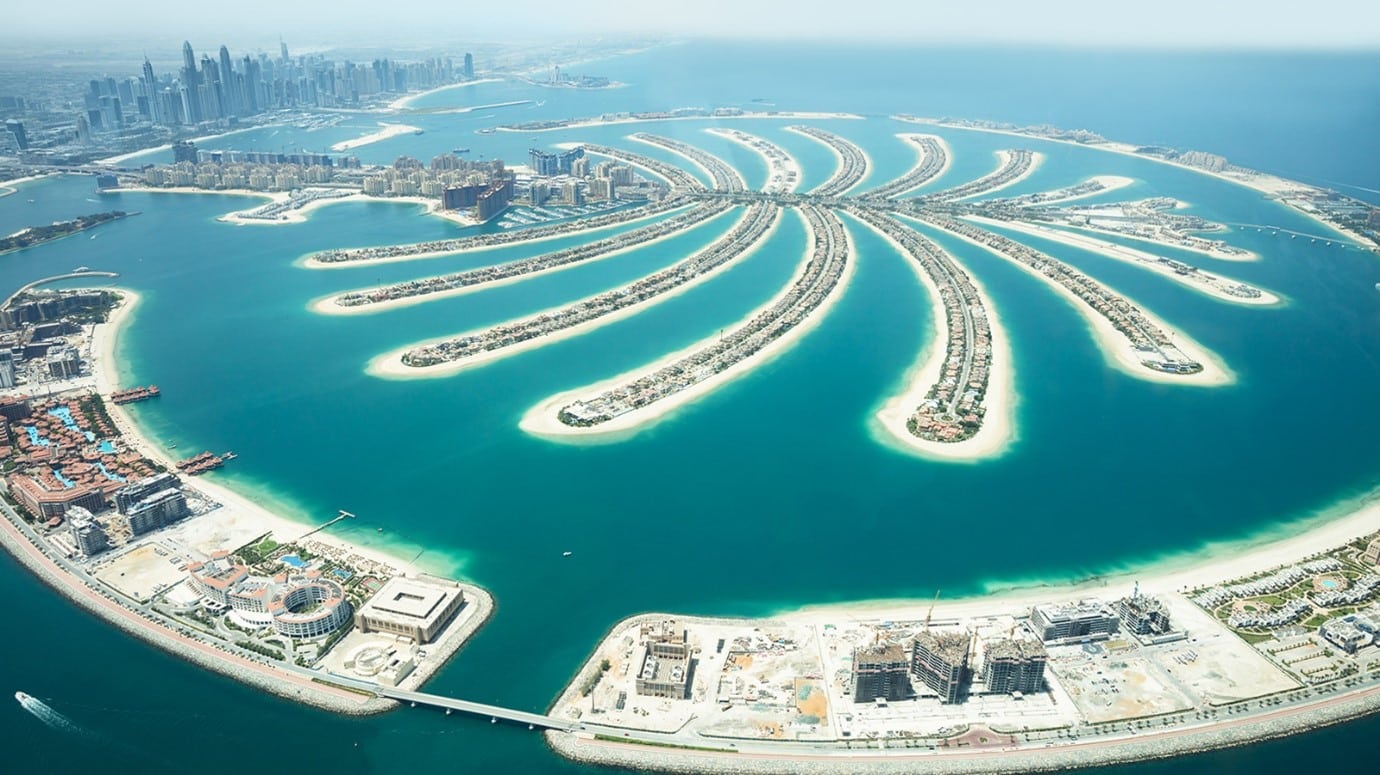At first glance, land reclamation seems a well-aligned solution to the human and environmental problems of jam-packed metropoli. Even the name speaks of recycling, reuse and reclaiming – all tenets of the sustainability ethos. But as they grow in ambition, so do the issues around them.
Not long ago, Hong Kong announced plans to create more than 18 km2 of man-made islands in the waters between Lantau and Hong Kong islands, with projected construction start dates of 2025, and residents moving in through the early 2030s. (In comparison, what is arguably the world’s most famous such scheme, the Palm Jumeirah in Dubai, is a ‘mere’ 5.7km2. And that’s visible from space.)
However, the colossal cost – US$ 80bn – has wreathed the HK project in doubt, and thrown a large-scale spotlight on the environmental issues involved, such as simply laying your hands on that much sand without creating environmental damage elsewhere. (In fairness planners say they hope to use construction waste instead.)

An all-out assault on the seabed?
Most often, reclamation land comes from dredging the nearby ocean (land-based sand being too smooth to form the foundations needed). However, for the huge projects now envisioned, dredgers may need to operate far out to sea and drill deeply.
The fine sand thrown up can create a water haze that blocks sunlight and disturbs the underwater ecology. It may drive away fish stocks, endangering the jobs of local fishermen. Dredgers and the bulldozers that move the sand are not, by their nature, environmentally friendly. The energy and machinery required to compress the sand also add their weight to the carbon footprint.
In any event, environmentalists (and economists) argued the Lantau plan would inevitably be vulnerable to rising sea levels, not to mention potentially consuming half the city’s entire bank account… While further public consultations were staged in February, a number of environmental groups refused to attend, arguing that it was effectively being held behind closed doors. So news of the findings or next steps are sketchy at present.
However, portents may lie in Malaysia’s equally vast and controversial land reclamation plan, The Penang South Islands. In May 2023, the project was significantly curtailed, apparently at the request of the Prime Minister, Anwar Ibrahim (with an Environmental Impact Assessment playing a part in the decision). At 18.2 km2 it would have rivalled Lantau but has now been halved. Critics had argued it would have ruined a rich fishing ground putting hundreds of fishermen out of work. At the new size, far fewer are expected to be affected.
Similar environmental doubts caused the truncation of Indonesia’s Great Garuda project. Hailed as the only way to save Jakarta – the world’s fastest sinking city – it had been planned to create 17 artificial islands to form a seawall. But work was stopped after only four had been completed and had already been shown to impact fishing.
Sceptics also argued that it would only put a sticking plaster over Jakarta’s problems, such as the abuse of fresh water supplies due to overpopulation. A Ministry of Maritime Affairs and Fisheries report also concluded that it could erode beaches, worsen the damage from storms and add to sea pollution. (Though other experts have contested this.) A smaller project, NCICD, is now in place, but Jakarta’s fate and challenges remain perilous.
Do they still have a place?
So where does this leave land reclamation schemes in the future?
They have certainly been successful in the past. New Zealand’s Wellington owes its size to decades of land reclamation. Rio de Janeiro the same. And reclamation in the Netherlands dates to the early 17th century. Such projects can transform unusable land into a fresh start for families and communities (or a millionaire’s playground, if you were being cynical about Palm Jumeirah…). And they are often incredible achievements of planning, invention, engineering and geology.
As the world’s population continues to swell, they will doubtless remain part of our future. Can geoscientists and environmentalists work together to reduce their environmental impact? Is ‘green’ reclamation feasible? Where are the good and bad case studies we can learn from? Or is it just the overreaching ambition of the largest projects that unfairly give a bad name to the rest?

One more thing…
Where in the world has land reclamation left us with an island… on dry land?
In 1859, the inhabitants of Schockland island finally lost their battle against the waters of Netherland’s Zuiderzee, which surrounded them. It washed over a settlement that had been in place since the Middle Ages, and the government moved the remaining 600-plus ‘Schokkers’ to the mainland. But in 1942, reclamation of the Noordoostpolder district and the taming of the Zuiderzee pushed back the seas, and Schockland, which had still survived in local memory, emerged to be recognised by inhabitants as an island again. But this time, on dry land; one of the reasons it is now a UNESCO World Heritage Site.





